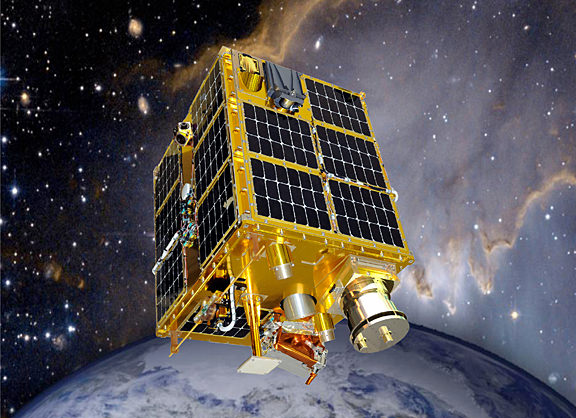I grew up playing with Legos, but never constructed anything like this! Andrew Carol built a replica of the The Antikythera Mechanism, the oldest known scientific computer, which was built in Greece probably around 100 BCE. No one in the current age knew about it until it was recovered from a shipwreck in 1901. Even then, it took a century until anyone could figure out what it was: an astronomical clock that determines the positions of celestial bodies with extraordinary precision. It is an analog computer with over 100 gears and 7 differential gearboxes, and is accurate to a day or two over its range.
Continue reading “Ancient Eclipse-Predicting Computer Rebuilt in Lego”
Science Sees Farther: Extraterrestrial Life
Are we alone in the universe? Can we save the lives of millions with new vaccines? How can we manage the increasing demands on our planet’s resources? Scientists try to answer these questions and more as part of a celebration of the 350th year of The Royal Society, the UK’s national academy of sciences. The Society has unveiled a new section on their website today, called “Science Sees Farther”, which includes essays, interviews and more on 12 different scientific topics, including extraterrestrial life, aging, health, climate change, and geoengineering, as well as discussions of the always-present uncertainties in science and how the internet has changed the science landscape.
Continue reading “Science Sees Farther: Extraterrestrial Life”
Cassini visits Enceladus – SpacePod 2010.11.30
NASA’s Cassini Spacecraft is doing some awesome stuff. Stay tuned to NASA’s twitter feed Space Cadets, today should be interesting. I’m Benjamin Higginbotham and this is your SpacePod for November 30th, 2010.
Continue reading “Cassini visits Enceladus – SpacePod 2010.11.30”
The Fall and Rise of ‘X’
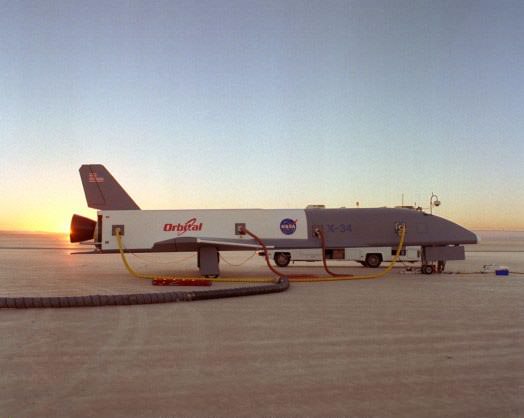
[/caption]
They are at the very edge of current U.S. technological capabilities; one is a supposedly mothballed technology test-bed, the other a super-secret space plane that is currently on orbit – but set to land soon. They are the X-planes, experimental spacecraft that are proving out concepts and capabilities whose beginnings can be traced to the dawn of the space age.
It would appear from amateur observers on the ground that the secretive U.S. Air Force X-37B space plane – will be landing soon. This prediction is based off the fact that the craft is dropping in altitude and the more basic fact that it is nearing the limit of its orbital capabilities and has to return to terra firma. According to the U.S. Air Force, the X-37B can remain on orbit for around nine months or 270 days at maximum, this means that the craft should be landing sometime in the middle of January.
The X-37B or Orbital Test Vehicle (OTV) lifted off from Cape Canaveral Air Force Station in Florida on Apr. 22, atop an Atlas V rocket. Not much is known after launch due to a media blackout imposed by the U.S. Air Force.
The Air Force remains mum about the details surrounding the landing and recovery of the X-37B. It is known that the spacecraft will land at Vandenberg Air Force Base in California.
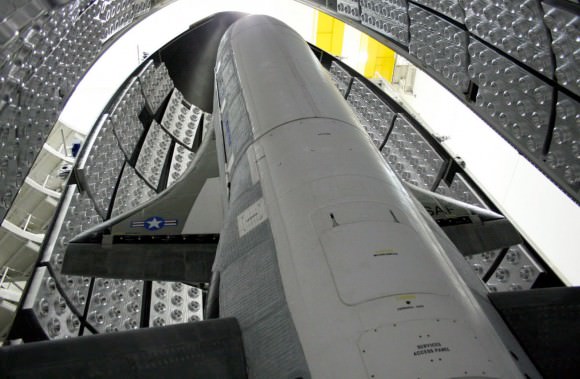
In many ways the craft resembles the shuttle with stubby wings, landing gear and a powerful engine that allows the craft to alter its orbit (much to the dismay of many observers on the ground). When the X-37B does touch down, it will do so at a 15,000 foot-long runway that was originally built to support the shuttle program.
The X-37B is one-quarter the size of the space shuttle. It is about 30 feet long and roughly 10 feet tall, with a 15-foot wingspan. It has a payload bay much like its larger, manned cousin – but naturally whatever that payload was for this mission – it was classified. The space plane was constructed by the Boeing Phantom Works. It is operated out of Schriever Air Force Base, Colorado. Another launch of the craft may take place as early as this March.
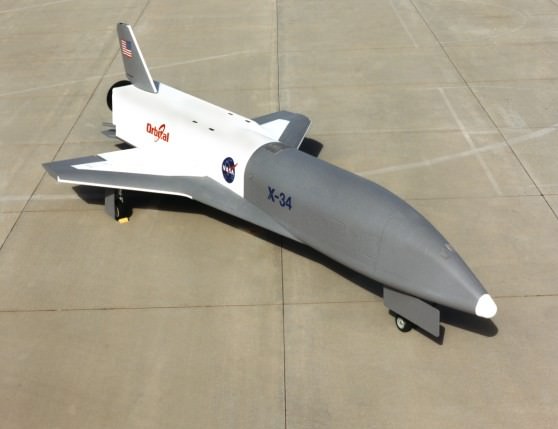
Meanwhile, as the X-37B is ready to head to the hangar, another X-craft appears to be given a new lease on life. Two of the X-34 spacecraft, built by Orbital Sciences Corporation (Orbital), were moved from their hangars at Dryden Flight Research Center to the National Test Pilot School located in the Mojave Desert in California. These technology test-bed demonstrator craft will be inspected by the NASA contractor with the idea of flying them once again.
The roughly 60 foot-long spacecraft were put into mothballs back in 2001. If their flight status is renewed they would add to the growing fleet of robotic spacecraft that the United States appears to be building.
The ‘X’ craft have a long and storied history in American aviation and space exploration. One of the most famous of the “X’ planes – was the legendary X-15. None other than the first man to walk on the moon, Neil Armstrong, flew in this program which tested out concepts that would be later employed in the space shuttle. As the X-37B prepares to end its first mission and the X-34 may be at the verge of a rebirth – could we be at the dawn of a new ‘X’-era? Only time will tell.

Flawless Launch of STP-S26
[/caption]
While the U.S. Air Force unsuccessfully tried to get a Delta IV off the ground in Florida – things worked out far better for NASA at the Kodiak Launch Complex located in Kodiak, Alaska. Friday’s Minotaur 4 rocket launch successfully accomplished its mission of placing not one – but six satellites into orbit some 400 miles above the Earth.
The mission took off just before sunset from Launch Pad 1. After launch the $170 million flight turned southeast from its launch site going out over the Pacific Ocean. The launch took place under a clear sky with the moon lighting its way.
The payload for this flight was a rather mixed bag of NASA, military and university experiments. All six of the launch vehicle’s payloads were released right on time about 30 minutes after launch. The so-called ‘FASTSAT’ for Fast, Affordable, Science and Technology Satellite automatically switched itself on upon deployment. The project is a demonstration of ways to deploy experiments and other payloads cheaply and effectively to orbit.
Four of the satellites that were onboard the STP-S26 mission included the “ESPA-class:” STPSat-2, FalconSAT-5, FASTSAT-HSV01 and FASTRAC.
The FASTSAT program is NASA’s first microsatellite designed to provide multiple customers with access to orbit – at a lower cost. The main goal of the FASTSAT flight is to prove the viability of this capability to various government, academic and industry customers. The intent is to show that you do not have to invest millions of dollars into a single, large-scale satellite to conduct experiments on orbit.
The launch vehicle itself is also rather cheap as it is comprised of spare Peacekeeper missile tech. The STP-S26 mission was powered to orbit by a Minotaur IV launch vehicle, which was provided by the Rocket Systems Launch Program. The Minotaur IV is produced by Orbital Sciences Corporation.
One of the ‘firsts’ on this flight was the utilization of the Hydrazine Auxiliary Propulsion System (HAPS) to allow for dual-orbit capabilities. It is hoped, that in future flights this could be used to allow satellites to other orbits to give them far greater flexibility.
Another first employed on this mission was the first to use the Multi-Mission Satellite Operations Center Ground System Architecture. This center is capable of operating various satellites at the same time at a minimal cost. Indeed, the overriding theme of this launch would appear to be providing access to orbit – for less.
Light Speed Animation
Ever wonder what it would be like to be a particle of light starting out at some distant astronomical object and then zoom (at light speed, of course) towards Earth and wind up being seen by hoards of Earthlings out looking at the stars at night? This video from ESA is an animation (and artist’s impression) showing just that. Enjoy the ride!
Continue reading “Light Speed Animation”
Anti-hydrogen Captured, Held For First Time
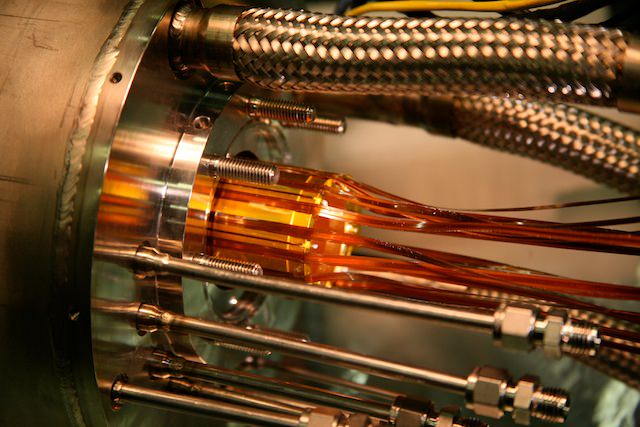
[/caption]
Can warp drive be far behind? A paper published in this week’s edition of Nature reports that for the first time, antimatter atoms have been captured and held long enough to be studied by scientific instruments. Not only is this a science fiction dream come true, but in a very real way this could help us figure out what happened to all the antimatter that has vanished since the Big Bang, one of the biggest mysteries of the Universe. “We’re very excited about the fact that we can actually now trap antimatter atoms long enough to study their properties and see if they’re very different from matter,” said Makoto Fujiwara, a team member from ALPHA, an international collaboration at CERN.
Antimatter is produced in equal quantities with matter when energy is converted into mass. This happens in particle colliders like CERN and is believed to have happened during the Big Bang at the beginning of the universe.
“A good way to think of antimatter is a mirror image of normal matter,” said team spokesman Jeffrey Hangst, a physicist at Aarhus University in Denmark. “For some reason the universe is made of matter, we don’t know why that is, because you could in principle make a universe of antimatter.”
In order to study antimatter, scientists have to make it in a laboratory. The ALPHA collaboration at CERN has been able to make antihydrogen – the simplest antimatter atom – since 2002, producing it by mixing anti- protons and positrons to make a neutral anti-atom. “What is new is that we have managed to hold onto those atoms,” said Hangst, by keeping atoms of antihydrogen away from the walls of their container to prevent them from getting annihilated for nearly a tenth of a second.
The antihydrogen was held in an ion trap, with electromagnetic fields to trap them in a vacuum, and cooled to 9 Kelvin (-443.47 degrees Fahrenheit, -264.15 degrees Celsius). To actually see if they made any antihydrogen, they release a small amount and see if there is any annihilation between matter and antimatter.
The next step for the ALPHA collaboration is to conduct experiments on the trapped antimatter atoms, and the team is working on a way to find out what color light the antihydrogen shines when it is hit with microwaves, and seeing how that compares to the colors of hydrogen atoms.
Mann: A Changing Climate Doesn’t Have a Political Agenda
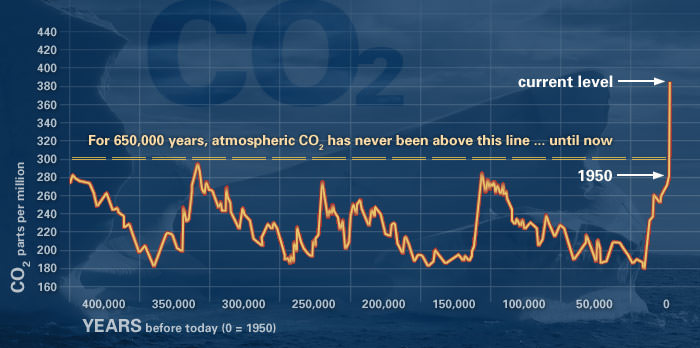
[/caption]
The body of evidence for climate change is strong and convincing, and multiple lines of evidence show the changes are caused largely by human activities. The consensus among scientists about the reality of the phenomenon is also convincing.
But from the nature of public discussions on the subject today – at least in the US – that consensus might not be apparent. And somehow the discussion has become a “debate,” which is often divided down political party lines.
“We have to make it clear that the ice sheets are not Republicans or Democrats – they don’t have a political agenda as they disappear,” said Michael Mann, a physicist at Pennsylvania State University, who has been at the recent forefront of climate research. “Certain facts cannot be denied. We have to find a way to steer the conversation to a good faith debate about what we can do about the problem, not this bad faith debate about the reality of it.”
Mann spoke to over 600 writers and journalists on November 7, 2010 at the combined meetings of the National Association of Science Writers and the Council for the Advancement of Science Writing, held at Yale University this week.
Why has the public discourse become so polarizing and why is there a fair amount of legislators and the public who now think that climate change is an elaborate hoax?
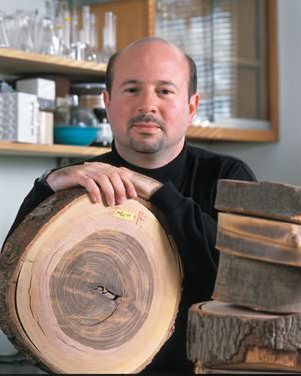
Mann said there has been a large, well funded campaign to manufacture misinformation about climate change, similar to how tobacco companies muddied the waters in the 1960’s on how smoking causes lung cancer and emphysema. It’s no secret that many climate change deniers have ties to the fossil fuel industry.
Mann referred specifically to an infamous memo sent out by GOP political consultant Frank Luntz in 2002 to President George Bush, “which basically said that if the public comes to understand the reality of this problem they will demand policy action to deal with it,” Mann said, “and so you need to manufacture doubt and controversy and uncertainty and cultivate a set of scientists who can act for advocates essentially for fossil fuel industry. And that is what is happened.”
And the science became politicized. “If you can politicize something in today’s political environment,” Mann continued, “you can immediately get half the population on your side. Unfortunately the forces of anti-science — those who deny the science — have been very effective in politicizing the framing.”

But thousands of scientists from almost 200 countries around the world agreed on the most recent Intergovernmental Panel on Climate Change (IPCC) report which said most of the observed increases in global average temperatures is very likely due to the observed increase in anthropogenic greenhouse gas concentrations. Additionally, the US National Academy of Sciences, the National Academies of all the G-8 nations, the American Association for the Advancement of Science and several other scientific bodies have all issued equivalent statements of consensus of the reality of human-caused climate change.
“Certain facts cannot be denied because you don’t like the implications,” Mann said.
Mann is probably best known for known for his “hockey stick” reconstruction of past climate, (Nature, 1998) which shows the world is warmer now than it has been for at least 1000 years. The “hockey stick” has been attacked by climate change deniers, and while new research has better defined the data, it has not been disproven, nor is it the only line of evidence for global warming.
“The hockey stick is not ‘the’ pillar of evidence for the reality of climate change,” Mann said. “There are multiple pillars that include just the basic understanding of chemistry and physics. But it is one of the more visually compelling pieces of evidence for warming.”
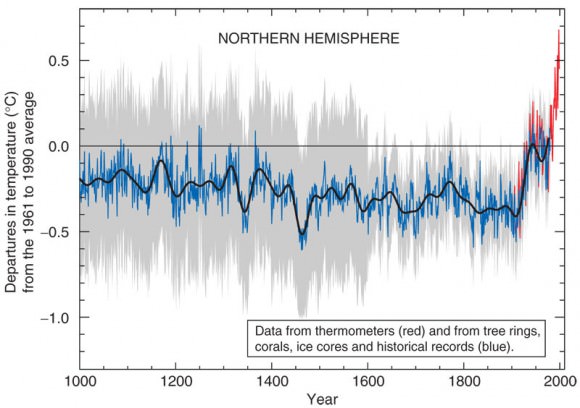
Mann conceded that various other studies and reconstructions of past climate data don’t agree entirely and that there are uncertainties of how much warming will continue because the predictions are based on models, which attempt to predict the future.
“There are legitimate uncertainties, but unfortunately the public discourse is so far removed from where the scientific discourse and controversies actually are, “Mann said. “There is not an uncertainty of the reality of climate change, that sea levels are going to rise, that arctic sea ice will be gone in a few decades or a whole lot of other areas, but we do have an uncertainty in our ability to project regional climate change.”
Mann said scientists don’t completely understand the El Nino and La Nina affects, how cloud feedback will influence the warming and other modeling issues.
However, Mann said, the science has improved over the past few years, and still, there is enough evidence for not just a hockey stick, but an entire hockey league.
“Every reconstruction reveals that the warming is indeed anomalous in a very long term context. Global temperatures are running the highest they have ever run. The twelve month running averages are warmer than they have ever been in documented history. There is no cooling of the globe and no decline to hide,” Mann said referring to the “Climategate” emails that were stolen from East Anglia climate research center and leaked just a few weeks before the Copenhagen climate summit in late 2009.
“Hackers stole thousands of emails –private correspondences between scientists,” said Mann, “and their words were cherry picked, taken out of context and distorted to make it sound like scientists were engaged in some sort of hoax.”
‘Hide the decline’ actually meant the scientists were going to remove unreliable tree-ring data, not cover up any decline in temperatures.
Mann said the real crime was the illegal theft of private correspondence, in addition to the moral crime of intentionally distorting what scientists believe and think.
Mann took his audience to task by saying, “I’d like to say the mainstream media recognized the manufactured controversy for what is was, but they didn’t, entirely.” He also admitted that scientists have not done all they could in the past to make the science clear and their words convincing.
But looking at the current political climate, Mann asked for journalists’ help in the future.
“No doubt we are in for a period of months or even years where climate science is likely to be subject to the sort of politically motivated inquisition that we haven’t seen, frankly, since the 1950’s,” he said. “It is necessary and important for the scientific community to do the best it I can to defend itself from this oncoming attack, and frankly, we are entirely reliant on the willingness of the mainstream media to serve in its role as the critical and independent arbiter and not just report the two sides of the so-called debate, but to actually establish what is fact and what is fiction. The scientists will not be successful against the attack that is coming unless the media is serving its role.”
Mann ended his talk with a picture of his daughter enthralled by a polar bear at a zoo. “I don’t want to have to tell my daughter that polar bears became extinct because we failed to counter a well funded effort to distract the public,” he said.
————————————
Note: For any reader who thinks they need to leave a comment to debate the climate change science, before posting, please take a look at the following information:
Mann’s (and other scientists’) data are entirely open and available for anyone to view.
RealClimate.org –– Mann and other climate scientists answer questions and discuss climate change data
NASA’s Global Climate Change Website. Lots of graphs, images and information.
Sagan Day Essays
[/caption]
Tuesday (11/09) is Carl Sagan Day — a chance to remember the legacy of one of the great spokespersons for science. The folks over at the Kepler spacecraft website held an essay contest, inviting the public to submit writings inspired by the imagery that Sagan created in his allegory of The Shores of the Cosmic Ocean. (Regrettably, I didn’t write about this beforehand to give Universe Today readers a heads-up.) The essays — which also include guest essays by notables such as Jill Tartar and Seth Shostak — are now available to read, and are all well worth the trip over to the Kepler website, especially if Sagan had an impact on your thought processes (as he did on mine). I hope you’ll check it out.
By the way, I am currently attending a joint meeting of the National Association of Science Writers ad the Council for the Advancement of Science Writing at Yale University and thus will not have the opportunity to post many articles the next couple of days. But the rest of the UT team will work to keep you updated on the news. While here, I’ll have the chance to talk with some astronomers and cosmologists, and have already met a lot of great and wonderful writers.
ISS Particle Detector Ready to Unveil Wonders of the Universe
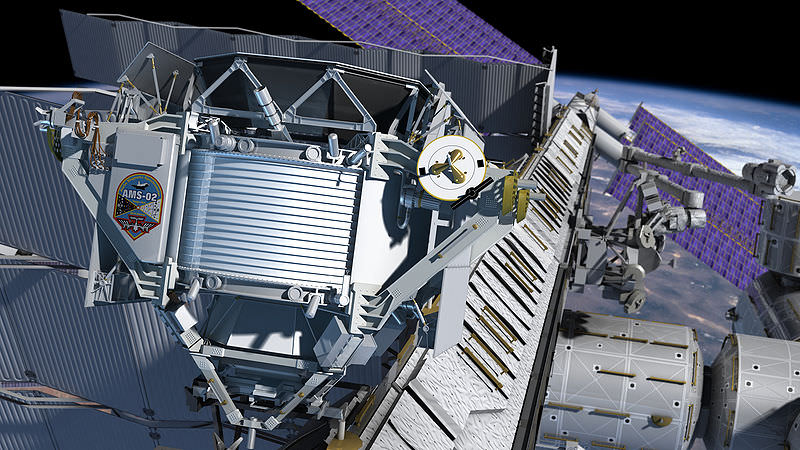
[/caption]
The Principal Investigator (P.I.) for the Alpha Magnetic Spectrometer-2 (AMS-02) experiment, Professor Samuel Ting, says that the experiment is already accruing data as it awaits its February 2011 launch date. Scheduled to fly aboard the final flight of the space shuttle Endeavour, STS-134, AMS-02 will search through cosmic rays for exotic particles, antimatter and dark matter. The experiment will be mounted to the outside of the International Space Station (ISS) and will require no spacewalks to attach.
Continue reading “ISS Particle Detector Ready to Unveil Wonders of the Universe”

